
 |
Welcome to Research Group for Process Metallurgy of Iron and Steel Making |
 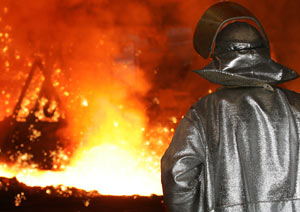 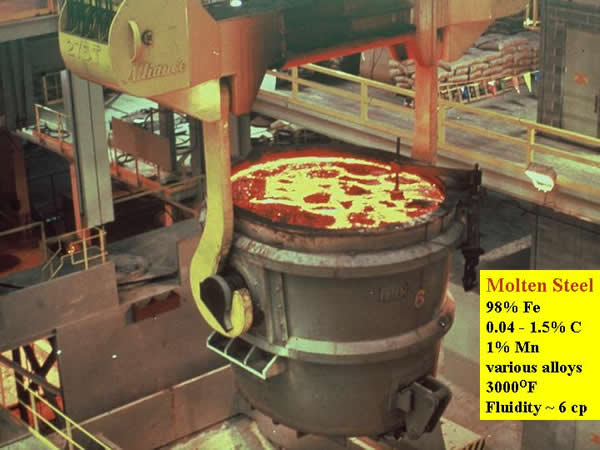 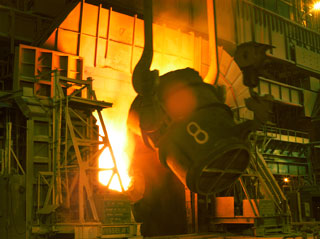 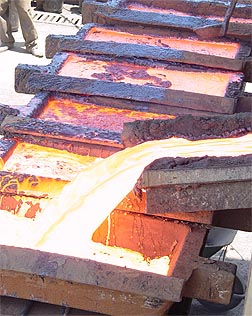 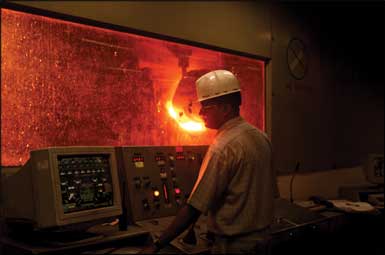 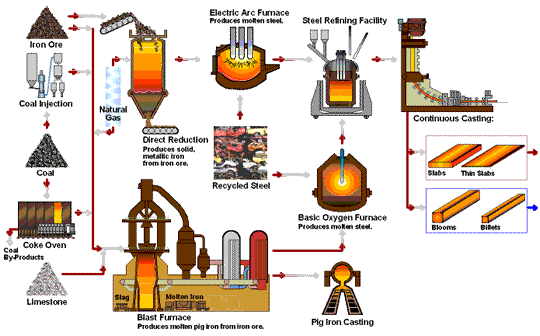  |
|||||||
| Home | Education and Experience | Research Interests | Current research/projects | Teaching | Publications | Group | Photo Gallary |
Excerpts from ‘Report of the working group on steel industry for the twelfth five year plan (2012 – 2017), Ministry of Steel 1
Human Resource Development in Steel industry1
1 Status
Steel industry requires technical manpower from different engineering disciplines and varying knowledge levels. As it has been described in the preceding chapters, technical personnel are required for various activities such as operation, project, engineering (design), maintenance, technology and R&D. Depth of knowledge and expertise required to perform the assigned job depend upon the hierarchical level and the department in which the employee is placed. The persons in the supervisory cadre are required to have, at least, a diploma in engineering and they pick up their required professional skills over a period of time from shop floor training and various other training opportunities provided. They operate the machinery and supervise the shift level operations. For officer level positions, the industry requires engineering graduates who should possess
• Good understanding of technology in the respective engineering discipline.
• Ability to adapt to the rigours of manufacturing sector (job rotation).
• Ability to manage resources optimally.
The technology and R&D positions need technical professionals who have the ability to do self-study, understand state-of-the-art or benchmark processes, analyze complex problems and explore new solutions. Generally, such positions demand personnel with high learning ability, mental agility and application orientation. These departments prefer personnel with high qualifications and floor experience.
The steel plants often outsource research projects to research labs and academic institutions. Good quality research output is possible, only if the research and educational institutions also have well equipped labs and competent research personnel.
2 Challenges
With the opening up of a large number of engineering colleges in the private sector in the last decade, it has become easier for students to get admitted for a degree course in the Engineering disciplines as compared to earlier periods. As a result, availability of diploma holders needed for supervisory shop-floor jobs is on the decline.
The manpower requirement of the Indian steel industry for all engineering disciplines, other than metallurgy, can be met from the large number of graduates passing out every year. A degree in metallurgical engineering is obtained from the national level institutes such as the IITs and the NITs where the best and the brightest of the students are selected on the basis of a rigorous nation-wide entrance test. The highly competitive nature of the examinations requires the students to invest a lot of energy and financial resources in the preparations for the test. These inter-related and complex socio-economic factors have resulted in a situation where the students’ expectations are raised substantially, especially in terms of the type of employment and the entry level salary. It is seen that engineering graduates, in general, prefer white collar jobs with the highest available pay package. As a result, quality manpower is hardly available for the manufacturing sector where salaries are lower than the financial and other service sectors and working conditions are relatively onerous.
Sometime in the early 80‘s, most of the premier institutes reduced the duration of engineering degree course from 5 to 4 years. In this process of reducing the duration of the course, several important topics were dropped from the course curricula. This resulted in substantial lowering of the standards of metallurgical engineering courses taught.
Over the years, professors with PG/PhD qualifications from overseas universities that focus more on materials rather than metallurgy, have given importance only to materials technology in the B. Tech courses. It is now seen that institutes do not have faculty for subjects related to metals/metallurgy. Most of the professors who used to teach Iron & Steel and other metals have retired. The institutes do not have appropriate facilities to carry out any relevant research in I&S, since the focus is now shifted to materials. As a result, graduates do not have any domain specific knowledge and interest in metals. So they opt for jobs which promise the highest salary and the least amount of shop floor work. Good students take up jobs in the financial sector or go to the United States to study materials engineering. In this situation, students of other engineering disciplines, sometimes without the necessary background or motivational level, usually fill up the PG seat in metallurgy. The problems that research institutes face are very similar to those of academic institutes.
The manufacturing industry, in general, is growing and as a result the trained and high quality manpower has alternative job opportunities outside the I&S industry, causing attrition like never before. This creates a perennial shortage of trained manpower. To make good the dilution of metallurgical education, a long and intensive training is needed to make a diploma holder / engineering graduate suitable for the job. It is also to be borne in mind that overall interest in metal/metallurgy has declined as number of persons pursuing higher education has come down drastically of late.
3 Strategies:
The fundamental reason for the decline of metallurgical education stems from the dilution of metallurgical degree course. At present, the degree is offered as Metallurgical and Materials Engineering. Even in the Premier Institutes, the focus is more on Materials than metals for different reasons. Since the importance of metals is growing in this country, the educational institutes may think about offering four year degree courses separately for metallurgical engineering and materials engineering‘. If the faculty members for metallurgical degree are not available in the Premier Institutes presently, the existing faculty may be trained with the help of Industry and Research Institutions. Creation of Steel Technology Centres at the location of the Steel Plant sites will help in the development of faculty quickly.
With improvement in the standard of the Engineering Graduate Courses (B. Tech), standard of post graduate courses also would improve. To make indigenous research useful and effective, development of domain experts is crucial. The post graduation courses should enable the students to specialize in specific areas i.e. iron making & steel making, physical metallurgy etc. Specialization in specific fields would help the industry in taking up Research Projects of complex nature to reduce dependence on imported technology. Good quality indigenous research is inevitable to address immediate and pressing needs of steel industry.
The students do not get exposure to practical Iron and Steel production processes. They are under the impression that the working atmosphere in steel plants is hot and dusty. They are not even aware that the steel industry has modernized itself considerably in the last two decades. If they know that IT and automation are best used in Steel Industry, graduates may not be flocking to IT and financial sector.
Industry would value the Researchers, when they become experts and prove their mettle. Development of Researchers into Domain Experts is a time taking process. Recognition of the performance happens only when the projects are implemented successfully in the business process. An STC located at the steel plants provides an important platform for carrying out industrial research combining academic expertise with shop floor experience.
Some of the Steel companies employ graduate engineers for the shift level operating and supervisory positions. They get disillusioned quickly due to lack of empowerment and personal growth opportunities. Competency mapping and drawing of appropriate job description at the entry level of the Graduate Trainees will help the Steel Industry to improve the morale of the trainees and reduce the attrition rate.
Reference: